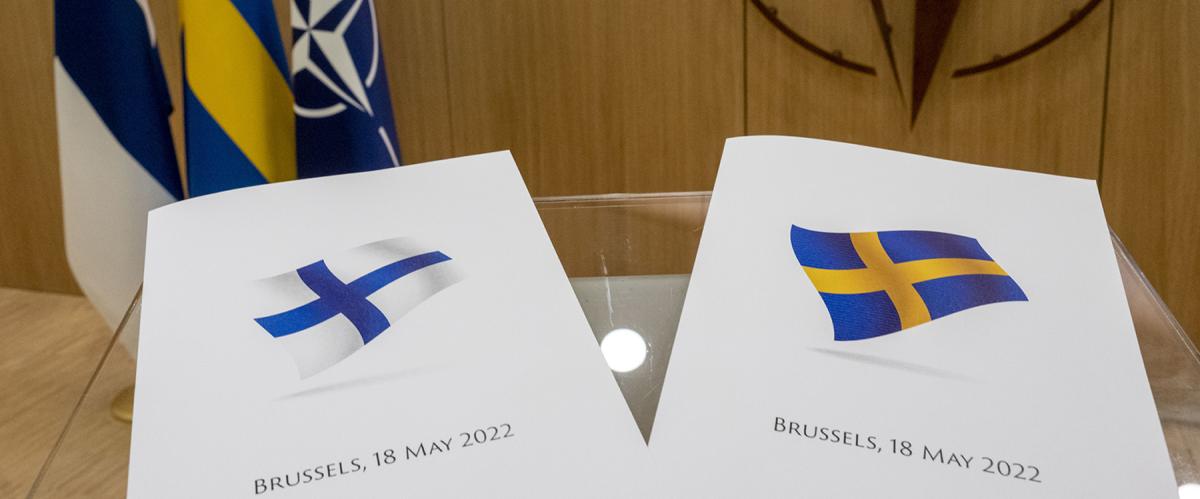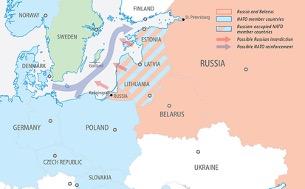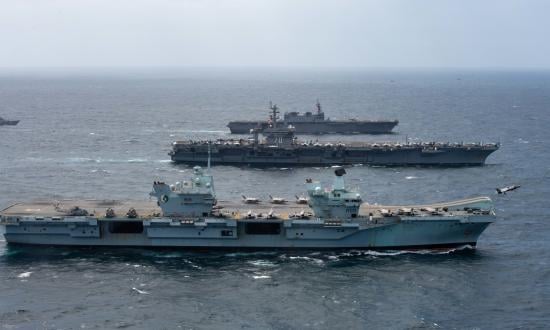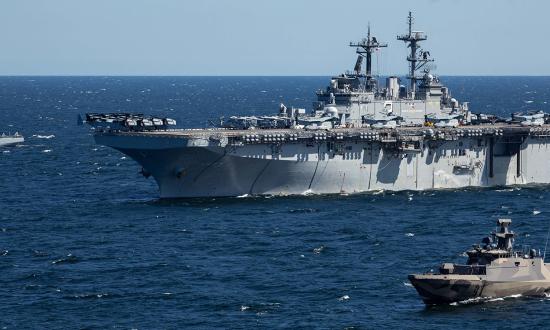On 4 April 2023, Finland made its mark in the global security sphere by officially becoming NATO’s 31st member. Finland’s arrival on the NATO stage bucked decades of official neutrality, a policy that began in 1948 as a balancing act attempting to avoid unnecessary confrontation with the Soviet Union, its neighbor to the east. Russia’s ongoing invasion of Ukraine, however, convinced Finland—along with fellow Nordic state Sweden—to abandon neutrality and pursue membership in NATO. Although Sweden’s bid has been met with political roadblocks, U.S. and Western military officials are optimistic that Sweden will become NATO’s 32nd official member before the end of 2023.
Introducing both countries as permanent members of the alliance would undoubtedly shape the face of maritime warfare in the NATO theater and enhance its naval abilities in the Baltic Sea and North Atlantic. With strong naval technology and heritage, advantageous geography, and increased maritime interoperability with NATO navies as full members, Sweden and Finland could give the alliance a critical edge, reinvigorating it in the Baltic and North Atlantic.
Invasion of Ukraine
Ever since the launch of Russia’s invasion of Ukraine in February 2022, NATO has become increasingly important as defense officials and politicians on both sides of the Atlantic navigate the largest conflict on European soil since World War II. While much of NATO’s response has been focused on donations of land-based lethal aid platforms such as tanks, missiles, and antiaircraft systems to Ukraine, NATO should also be centered on bolstering its maritime deterrence capacities in the Baltic and North Atlantic regions.
Despite the weakening of Russia’s naval forces in the Black Sea theater, the Russian Baltic and Northern Fleets pose a considerable threat to NATO nations. As recently as February 2023, the Baltic Fleet conducted ballistic-missile strike drills in conjunction with nuclear-capable hypersonic Iskander missiles, which have been used extensively against critical infrastructure in the invasion of Ukraine. Sandwiched between Poland and Lithuania, the Baltic Fleet’s headquarters in the strategic exclave of Kaliningrad is in an ideal position to threaten Russia’s neighbors and potentially disrupt international cargo routes. The Baltic Fleet hosts several potent Buyan-M corvettes—equipped with nuclear-capable Kalibr missiles as well as Kh-35 and 3M55 Oniks supersonic antiship cruise missiles. The Fleet’s maneuverable corvettes are well-suited for antisurface warfare and long-range strikes on land targets.
Farther to the north, the Russian Navy’s Northern Fleet threatens NATO’s Arctic and North Atlantic flanks. Between its array of modernized Borei-A class ballistic-missile submarines and growing contingent of icebreakers allowing it to expand its operations in the Arctic, the Northern Fleet is capable of projecting power far beyond continental Europe. Headquartered in the Kola Peninsula with fleet operations aided by ports that do not freeze in the winter, its reach is also augmented through its employment of Yasen-class (NATO: Severodvinsk) submarines. As a testament to the Northern Fleet’s unhampered movements compared with the relatively geographically constrained Baltic Fleet, Yasen-class submarines are thought to frequently operate off U.S. and European coasts, posing a potential menace.
Geographical Advantages
Although the Russian Navy’s Baltic and Northern Fleets are in an ideal geographic position to threaten the maritime security of a NATO state, the official addition of Finland and Sweden to NATO would do much to counter and contain any Russian threat to the alliance. When analyzing the Russian Northern Fleet’s location within the heavily militarized Kola Peninsula, it becomes apparent that two primary access routes reach from mainland Russia to the northern reaches of the Peninsula: the R21/E105 highway, also known as the Kola Motorway, and the Kirov Railway, linking St. Petersburg with the Kola Peninsula. Given that any Russian territorial waters farther north or east of the Northern Fleet’s headquarters in Severomorsk ice over in the winter, it can be assumed that the Kola Motorway and Kirov Railway are the only year-round supply routes for the Northern Fleet. Finland’s advantageous geography plays to NATO’s favor here: with a border paralleling both the Kola Motorway and Kirov Railway, whose nearly-identical contours lie less than 100 miles to the east, the threat of a sea- or land-based strike directly from Finland’s territorial waters or soil to disrupt or destroy the Northern Fleet’s primary year-round supply route is a powerful deterrent that could severely limit the Russian Navy’s reach in the Arctic and North Atlantic.
Farther southwest, the strategic island of Gotland would greatly enhance the NATO alliance’s ability to exercise sea control over the entire Baltic, despite continued Russian presence in Kaliningrad. Located roughly in the middle of the Baltic Sea and belonging to Sweden, its strategic significance has been demonstrated throughout its history: Russian forces invaded it first in 1808 and again in 1945, the latter invasion conducted to overtly project Soviet power into the far ends of the postwar Baltic. In more recent years, the island’s importance in countering Russian regional aggression in the Baltic has been highlighted by exercises like BaltOps in summer 2022, in which 2,400 U.S. Marines and sailors from USS Kearsarge (LHD-3) conducted a practice amphibious invasion to retake the island from an aggressor.
Furthermore, if viewed as an unmovable aircraft carrier of sorts, Gotland would be indispensable in allowing NATO to exercise near-complete air supremacy over the Baltic Sea. As a full NATO member, Sweden would be in a position to allow U.S. Navy, Air Force, and allied aircraft to detach to the island, a move that could virtually lock NATO’s ability to command and control the Baltic Sea’s airspace and valuable shipping lanes on the surface.
Naval Tradition and Technology
For decades, NATO has largely been led by a succession of air force and army generals, and although Sweden and Finland both possess ample might on land and in the skies, their unique naval traditions and technological prowess may very well succeed in reinvigorating the alliance’s naval component. Sweden, one of the few nations capable of designing and producing its own submarines, has begun building its next-generation A-26 Blekinge-class submarines, which will capitalize on the Swedish military industry’s penchant for effective undersea noise cancellation.
The Swedish Navy’s prowess for stealth and effectiveness does not stop at its undersea platforms, however. Designed with an angular tumblehome hull resulting in minimal signature traceability, its Visby-class corvettes are ideally suited for Baltic operations. Furthermore, the corvette’s combat abilities are honed by its Saab RBS 15 Mk 2 antisurface missiles, capable of traveling at high subsonic speeds and equipped with powerful antidetection technology that render it extremely difficult to combat. Between their stealth, versatility, and firepower, Visby-class corvettes would improve the lethality of NATO’s maritime component in the Baltic and could act as an ideal counterbalance to Russia’s Buyan-M corvettes. Sweden’s commitment to modernizing its fleet with technologically advanced and capable platforms is also evident through the upcoming commissioning of the Artemis, the Swedish Navy’s upgraded signals intelligence ship that replaces its aging predecessor, the Orion. The Artemis would be a key asset to maintaining NATO’s maritime intelligence picture in the Baltic.
Operating in close conjunction with Sweden, the Finnish Navy has also made great strides in modernizing its fleet, overhauling its Hamina-class fast-attack surface combatants with major updates including variable-depth sonar and integration of torpedoes to bolster Finland’s undersea warfare capabilities. Furthermore, Finland’s government authorized the construction of four Pohjanmaa-class corvettes in 2015 to replace older minelaying and missile craft. Much larger in size, the future Pohjanmaa class could easily augment the Finnish Navy’s warfighting ability and versatility in the Baltic.
Looking Forward
Finland and Sweden’s addition to NATO would bring a newfound emphasis to the alliance’s maritime security amid the invasion of Ukraine. Exercising control over the maritime domain and its airspace will be the key to ensuring the security of NATO member states, and is contingent on superior intelligence, technology, and interoperability with allied partners—something Sweden and Finland would excel in. Sweden and Finland’s efforts to modernize their fleets with capable platforms should enhance NATO’s shared intelligence, sonar, and maritime operations capabilities, which, in turn, would likely nullify any element of surprise the Russian Baltic Fleet could hope to achieve in the event of a military escalation.
On NATO’s North Atlantic flank, Swedish submarines would add a capable asset to undersea deterrence efforts, along with a distinguished naval engineering and design industry that could very well energize and partner with NATO’s other defense industries. Finland and Sweden would be prepared to robustly and smoothly integrate the alliance’s Standing NATO Maritime Groups, two of which operate continuously in the Baltic and North Atlantic, and a history of cooperation with U.S. and NATO naval forces in recent exercises would allow for immediate and effective deterrence.







